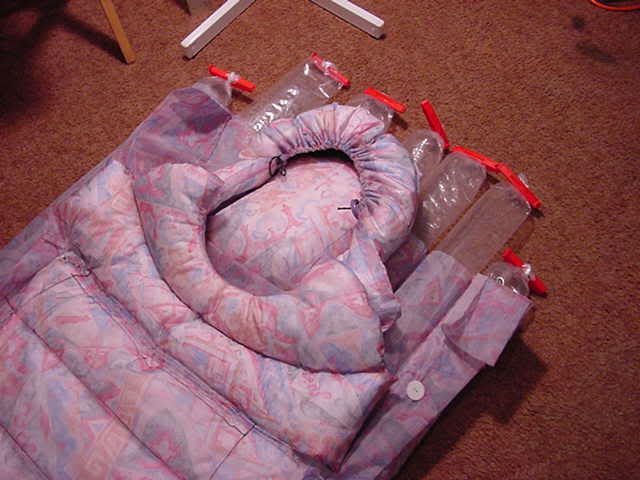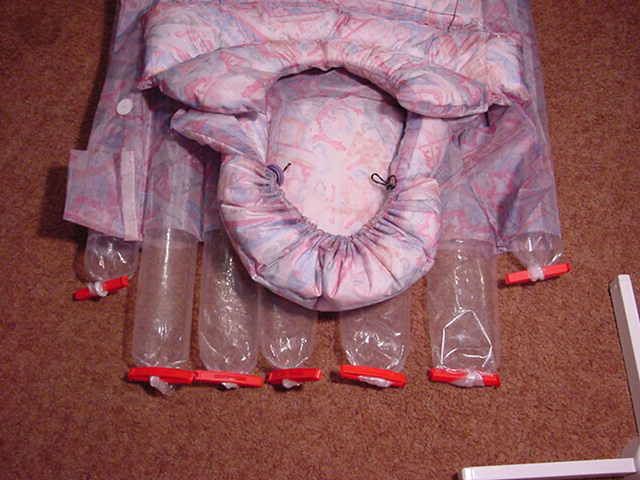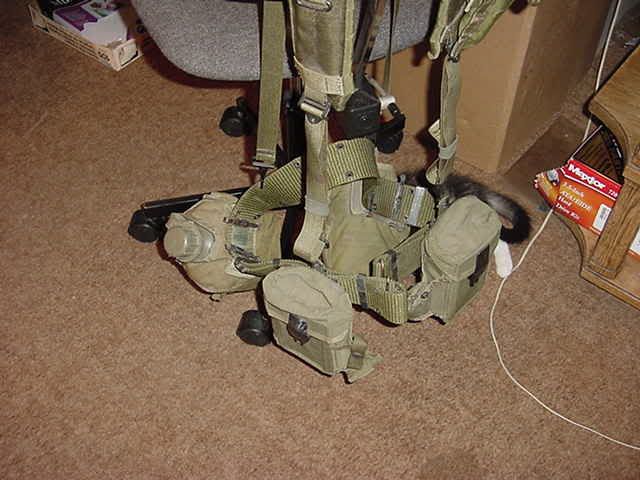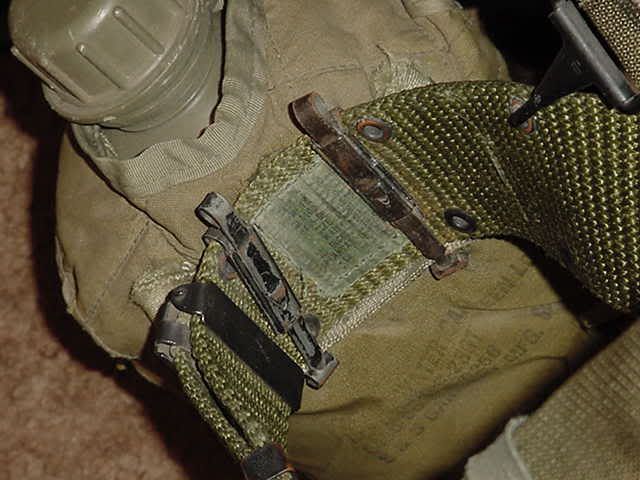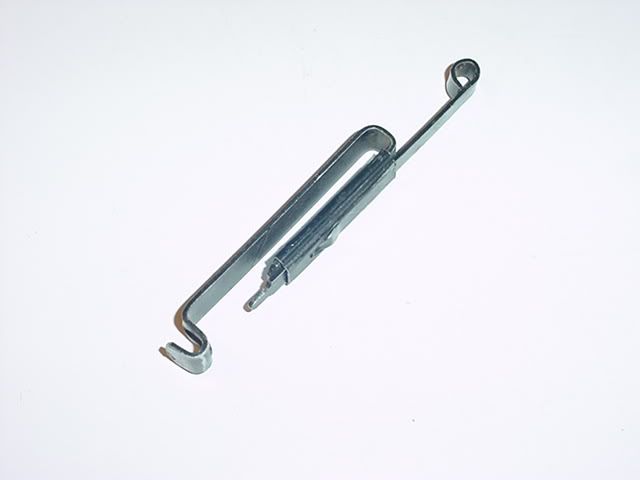Topic
SuperUltraLight: For the Masses?
Forum Posting
A Membership is required to post in the forums. Login or become a member to post in the member forums!
Home › Forums › Campfire › Editor’s Roundtable › SuperUltraLight: For the Masses?
- This topic is empty.
-
AuthorPosts
-
Jun 2, 2005 at 2:05 pm #1337806
Sorry slipped my mind about carrying the poles. DUH. But you strap idea is a good one. The idea of using teqnigue to compleatly eliminate the pack in backpacking is sort of weird but its cutting edge.
Jun 2, 2005 at 2:07 pm #1337807Useing your idea with the straps allsom allows this system to stick around when you ditch the inflatable to make room for winter clothes
Jun 2, 2005 at 3:14 pm #1337809If you get rid of the sleeping bag/quilt and the pad you save a pound and a half of pack weight. Just sleep on the ground in your clothes. If its raining you can pitch the tarp, or just wear it. If you get cold at night, you can hike at night and sleep during the day.
In fact, if you just wear the poncho/tarp then you eliminate the secondary use for the trekking poles and can justify getting rid of them too! That’s another pound gone.
You can then also get rid of the stakes, lines and assorted pitching paraphernalia for a few more ounces. Eliminate the cooking gear and it’s a few more ounces. But, really it’s kind of silly to be arguing ounces when there’s pounds to get rid of in the sleeping bag, pad and poles (although the poles don’t count toward base weight, you still have to carry them).
That puts you at about 3 pound base pack weight, plus you’ve lost a pound of your carry weight from the poles.
Have fun,
BJun 2, 2005 at 10:55 pm #1337816Carol
Jun 2, 2005 at 10:58 pm #1337817Carol,
Good luck on your sub 5 pound adventures. I’ve long felt 5 pounds wasn’t an impossible goal. I’ve done overnights in fall and spring with just the cloths on my back and the 10 essentials stuffed in my pockets. Winter overnights were done with what was typically carried in day pack while ski touring or about 3 to 4 pounds. But as with Ryan and Alan’s trips survival was the key not comfort.
Now that I’ve got some good basic ultralight gear built, over the last few months I’ve been looking at SuperLight gear. The goal being something that provided the same level of comfort found in your normal 3 season gear. So it needs to support weather extremes from low 20’s to over a 100 degrees. The other criterion is durability. It’s rather easy to build something light if durability isn’t a serious factor. But how can one build a sub 5 pound pack capable of surviving a 5 month thru-hike without either babying the gear to the max or replacing every item one or more times.
It also seems clear that designing such gear requires a greater degree of integration. I’ve toyed with several core components but am still working on developing the unified theme that ties together function, weight, durability and comfort. Not sure whether it’s possible but it’s a fun challenge.
Ron.
Jun 3, 2005 at 6:30 am #1337822HI Ron!
Glad to hear you’re putting your talented design mind to SUL. Can’t wait to see what you come up with!Jun 3, 2005 at 6:37 am #1337823I’ve done a 5-day survival “backpack” with just a fanny pack. My goal in the SUL Challenge is different. I want the gear to be “transparent” so the wilderness comes into focus. With survival level gear, that’s what I focus on – survival. With too much gear, that’s what I focus on – gear. I want to find out if 5-lb is the place where I don’t need to constantly focus on survival AND the gear doesn’t distract me from my surroundings.
Jun 4, 2005 at 9:47 pm #1337871Carol, what exactly do you mean by “transparency?”
Jun 4, 2005 at 10:00 pm #1337872Andrew, contact me offline ([email protected]) with your email address and I’ll send you my gear list. I just figured that given the topic, posting my gear list here might be inappropriate.
-Tony
Jun 4, 2005 at 10:03 pm #1337873Hi Tony,
I was just getting a little poetic. The gear is there to help me enjoy the wilderness, not to be the focus of the trip, i.e. be transparent.Jun 6, 2005 at 3:59 pm #1337914Ryan mentioned a 3/8 closed-cell foam with a cured surface for sub 5 pound weight. The REi blue is not cured and the other pads I have ran across lately are not cured either. What brand and store is carrying the cured surface version.
Lacking a cured surface and thus possibly a soaked pad, wouldn’t one put the pad under the ground sheet to keep dry?
Jun 9, 2005 at 10:16 am #1338016Hi Fred:www.gossamergear.com have this tipe of pad.Good look.
Jun 10, 2005 at 10:04 am #1338041An equally light alternative to using a torso length pad is to make or buy an ultralight air mattress. Last year there were a number of discussions about making super light air mattresses. One such thread can be found at:
http://www.backpacking.net/forums/showflat.php?Cat=&Number=52242&page=&view=&sb=5&o=&fpart=all&vc=1
http://www.balloonbed.com/ is selling a air mattress which use balloons for the air bladders. “Base weight” is 3oz, plus .2oz (7grams) worth of balloons / night. The whole package (air mattress, pump, balloons for four nights is smaller than an apple. I wrote up a brief review of the balloonbed http://www.verber.com/mark/outdoors/gear/reviews/balloonbed.html
I generally found the balloonbed to be more comfortable than a therm-a-rest ultright or a good closed cell pad when it came to cushioning. I wouldn’t want to use it in cold weather since it was be less insulating and tieing balloons with cold fingers won’t be fun.
I wouldn’t recommend using an ultralight air mattress on trips where food and/or water drive pack weight up significantly because you will really want your pad to help the structure of your pack as well as providing something to sleep on.
–mark
Jun 10, 2005 at 1:05 pm #1338042Hi Mark, That is one of my projects and was a very popular thread. I use the my trail name of gardenville at some forums. Using the Poly Tube Material for an Air Mattress was one of my better ideas.
The SUL DAM and Sleep System will be used with a pack bag mounted on one of my SUL External Frames so I don’t need a Pad for pack support. The summer version of my SUL Air Mattress can weigh as little as 4 or 5oz and be 78″ long x 26″ wide and 3.5 ” thick blown up. This goes into my hammock so the 26″ width works out fine. The final weight is a factor of the shell material used and type of clamp for the Poly Tubes.
I finished a working prototype DAM and Down Top Cover good to “0” degrees for use in my custom silk Speer Hammock. You can see the DAM System at the end of the thread. Cancer interrupted my cold weather testing plan last fall. I was able to finish my prototype and I hope to roll over my test plan from last fall to this fall.
The finished system was going to be made out of some Pertex Quatam I have but I may use something that is easier to replace and save the Pertex Quatam for something else.



 Jun 21, 2005 at 1:40 pm #1338355
Jun 21, 2005 at 1:40 pm #1338355Ryan wrote a great article called “Hiking Efficiency: A Day in the Life of an Ultrlight Hiker”. “Slow Joe” has a question?
For a long continuous hike such as an AT Thru-Hike:
1. Where is the most efficient place to carry my water?
2. What is more efficient taking a bottle out of a pocket on my pack for a drink (or someplace else) or using somekind of Platypus bottle with a drinking tube that I just suck water out of?I have checked the weight of a lot of different water conainers. The Platypus water products seem to be the lightest ones. A small mesh pocket for a bottle would weigh less then a larger mesh pocket for something with a drink tube but if the drink tube way is more efficient day after day for several months the extra weight might be worth it.
I will be making my AT Pack so I can tailor my pack and how I carry my water bottles (s) what ever way seems to be the most efficient way. I expect to carry bottles for up to 2 liters of water.
Thanks.
Jun 29, 2005 at 1:49 pm #1338561>> 1. Where is the most efficient place to carry my water?
From the standpoint of weight distribution, as close to your pack as possible – ie in a hydration sleeve inside your pack. unfortunately, access is usually a pain, which makes you inefficient when it comes time to retreat/refill your water bladder. From a standpoint of water use, a hydration system is very hard to beat. But, you can’t monitor your water consumption levels doing that either, and i find that i drink more than i need when using a hydration system.
Jun 29, 2005 at 2:23 pm #1338562Bill,
I would agree with Dr. J’s response as to the best place to carry water.
However, for my part, i believe (i could be wrong) that there are really a number of factors that might come into play. Perhaps what follows is a little bit of over-analysis (or “over-anal-ysis” in this case – a bit too anal-retentive here???).
The bottom line will end up at the same spot as Dr. J, but a more circuitous route will be followed to get there.
1. keep heavy things as close to the body’s natural CG (center-of-gravity) as possible.
2. since the natural CG is inside our body, we can’t do this. furthermore, wearing a 10-30lb pack on our back moves our CG rearward.
3. it would be nice to distribute the water around our waist, i.e. around the area of our body’s natural unladen CG. this would NOT move our CG while wearing a pack forward, but at least would no longer contribute to the rearward movement of our CG. But as you have already determined empirically (am i recalling this correctly from your earlier posts on the water-belt???), ergonomically this isn’t really practical. it would also unload our shoulder straps somewhat if the water weight was transferred from the pack’s hydration sleeve to our hip/waist-belt, but again ergonomically, this isn’t practical for large volumes of water.
4. we have a heavy moment attached to our back, i.e. our pack.
5. since the wt. of our pack has moved our CG towards our back instead of inside of us, it would be nice to counter-balance this moment by moving the water in front of us, e.g. in a chest pocket, but perhaps again, both ergonomically and from a safety standpoint this might not be a good idea since it might make bending over, climbing with our chest close to the rocks, or seeing our foot placement difficult.
6. so now, the bottom line as i see it is: read Dr. J’s post again for the right answer and forget what you’ve just read in this post.i’ve only written it to perhaps stimulate someone else, more clever than i, to come up with a better way to carry water. as far as my own ideas, i’m “dry”.
If i want to keep moving w/o having to stop to drink, the bladder is my choice. Also, it’s easier to keep the fluid cooler in the summer & warmer in the winter if it’s insulated inside of the pack. From a drinking effort standpoint, not that “sucking” water through a Platy’s tube is difficult, but it’s obviously easier to take a Platy bottle & tip it upside-down & drink from it, or squirt it into your mouth. I find that i drink more often, every 10-15 minutes a couple or a few swallows, if i’m using a bladder. if using a bottle, i drink less frequently (b/c i have to stop to drink or else i would trip & fall – i can walk & chew gum simultaneously, however), but i drink more than just a couple of swallows at one time.
if MY bladder starts to fill, then I’m drinking too much – this occurs more frequently when using a Platy hyd. bladder. However, if the converse occurs, i have to wonder if i’m gettin’ a bit dehydrated? One thing i like about Platy bottles is that at a glance i can see how much water i have left just in case i need to ration it b/f the next water source is reached.
addtionally, for some individuals tight capsular ligaments of the shoulder joint restrict range of movement and prevent retrieving a water bottle from side mesh pocket. one could, however, use a bungee loop to afix water bottles to the shoulder straps. obviously, a bladder’s tube eliminates this issue. they even have a nice “tube director” that you can bend to place the bite-valve right in front of you mouth – sort of like Bob Dylan playing the harmonica while having both hands occupied playing the guitar. For cold weather i might recommend an insulated tube covering – don’t want the water to freeze if we forget to drink regularly.
GVP carries a bladder&tube in a side pocket of the G5 pack. he mentioned this in an email he sent me a while back. i guess it’s not too difficult to check how much is left in a bladder in the side pocket (or rear pocket of the G6 Whisper pack) as cp. to a bladder in a pack’s int. hyd. sleeve.
do you want to revisit the water-belt idea, or a variation of it?
Jun 29, 2005 at 4:35 pm #1338565When I first started backpacking, in the days when external packs ruled the trails, internal frame packs were deemed a passing fad, and frameless packs were only carried on day trips by bird watchers, I came across what I always felt to be the best solution for carrying water. (By the way, did I miss insulting anyone in my reminiscence?)
I attached a water bottle holster directly to the e-frame hipbelt, sliding it as far toward my hip as possible (where the frame stopped it.) In those days, hipbelts rarely had stabilizer straps to interfere with this placement. It put the water as close to my center of gravity as possible, and prevented it from exerting any “leverage” on the pack.
Camp Trails evidently agreed with this placement, because they adapted a very similar location on their Wilderness internal frame pack. (Yes, by then, it was obvious that i-frames were not a passing fad; once Colin Fletcher started using one, they were here to stay!)
However, shortly after this placement was introduced, folks started walking along the trails sucking water from tubes – and the hydration sleeve drove the water bottle pocket to extinction. (When did we get in such a hurry that we couldn’t stop for a minute or two to take a drink and, perhaps, enjoy the view? End of editorial.)
Given my druthers, I still think the hipbelt is a great place for a water bottle. Of course, if you prefer a bladder and hose, inside the pack along the back is the best. With frameless packs, which usually lack stabilizer straps, maybe the pockets will make a comeback (what do you say, Glen Van Peski and Ron Moak?)
Jun 29, 2005 at 6:42 pm #1338567I want to thank Ryan, Paul, and Glenn for your impute. As far as I am concerned everything is on the table for this question. I remain open to other ideas or comments.
For most of my hiking life I have used some type of water container that attached to something on my hip. For my years as a US Infantryman it was the standard army canteen on my web gear pushed back toward my back. This arrangement made it very easy to reach my canteen and I normally had a canteen on both sides. The canteen cover had 2 clips on it that let you attach it to your web gear anywhere you wanted it. The webbing on the rucksacks were even made so you could attach the canteen cover to it.




The clip weighs 0.70oz so in todays world that clip would be way to heavy to think about using. I expect something like a light weight piece of Grosgrain would work. Since I expect to use one of my external frames on my AT Hike I will look at a possible design change for the “Side Wing” idea I am playing with. The Platypus .5L water bottle weighs about 19.5oz full of water. A pouch of some type should not be to hard to make that would attach to the “Side Wing” things. I could put a pouch on both sides of my frame. I could made them out of some really light material (think Cuben maybe) one for a water bottle and the other maybe for my small digital camera.
Something like this pouch/platypus bottle would put my water bottle on my hip belt and easy to reach. I will work on this idea and see how it turns out.
Jun 29, 2005 at 7:07 pm #1338569I’d forgotten about the army wearing canteens in the same spot (I was in the Air Force; they didn’t trust us with real military gear.) However, now that you’ve reminded me, I do remember playing with my Dad’s old webbing belt and (aluminum) canteen from WWII.
Guess my idea wasn’t anywhere near as original as I thought – the army got there first. (Don’t tell the Marines I said that!!)
Jun 29, 2005 at 8:40 pm #1338571I’ve seen peoples ideas for a water belt and thought it was a great idea. However unless it is integrated into the pack it could get in the way of a hip belt. Is it possible to make a system that would carry it around the small of the back at about stomach height. I think there it would have even less of a percieved weight since that’s where we would carry extra weight if we were heavier.
Jul 9, 2005 at 1:51 am #1338800I agree with Dr.J. that monitoring wa ter consumption levels is essential. In the winter I do store my bladder next to my back and use an insulated tube. I have become pretty good at estimating my remaining reservoir level, however, during the rest of the year I hang the fill opening flange on my Camelbak 3 liter bladder on the side compression strap that I added to my GoLite Gust. This makes it very easy to both monitor remaining reservoir level and to refill.
As far as consumption goes. I do drink more with a bladder-which is the idea. Most atheletes perform dehydrated and experience related reduction in work output and resistance to injury. With the bladder I sip small amounts every 2-3 minutes on the fly. This is almost like being on a glucose and electrolite I.V. drip. My body loves this and I can hike or climb 14 hrs. straight and still be strong and energetic nurturing my body in this manner.
Even Uber Hardman Mark Twight says if he had it to do over he would hydrate more – alot more.
Jul 9, 2005 at 2:55 am #1338803any chance of some pics of the Gust compression strap w/ and w/o the bladder?
Jul 9, 2005 at 4:51 am #1338808Sorry Paul,
I rang up Emily at the local phone company exchange office on my dial telephone to order one of those new-fangled digital cameras to snap some photos for you but my party line was occupied. If I can get the Edsel to turn over today maybe I can get down to the dry goods store to see if the new models have come in.In the meantime, I can tell you that I used the supplied stitched in webbing attachment points to sew 2 compression straps on each side exactly like most packs come with. I used 1/2 in. webbing and ladder lock buckles from Outdoor Wilderness Fabric Inc. <owfinc.com>
These straps held my Camelbak fine for the length of the JMT last year and also held my randonee skis in place while climbing 7000′ up Shepherd Pass this May with no problems.
Jul 9, 2005 at 9:46 am #1338810thanks. understood – for the most part. what i didn’t understand, but it didn’t seem to affect me appreciation for the reply you wrote, was the “Luddite” reference in the subject line.
-
AuthorPosts
- You must be logged in to reply to this topic.
Forum Posting
A Membership is required to post in the forums. Login or become a member to post in the member forums!
Our Community Posts are Moderated
Backpacking Light community posts are moderated and here to foster helpful and positive discussions about lightweight backpacking. Please be mindful of our values and boundaries and review our Community Guidelines prior to posting.
Get the Newsletter
Gear Research & Discovery Tools
- Browse our curated Gear Shop
- See the latest Gear Deals and Sales
- Our Recommendations
- Search for Gear on Sale with the Gear Finder
- Used Gear Swap
- Member Gear Reviews and BPL Gear Review Articles
- Browse by Gear Type or Brand.


